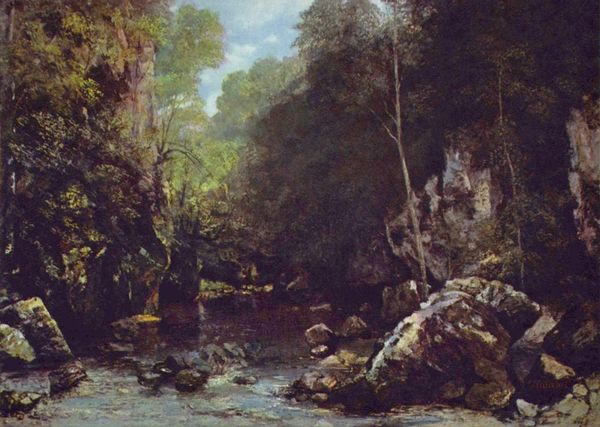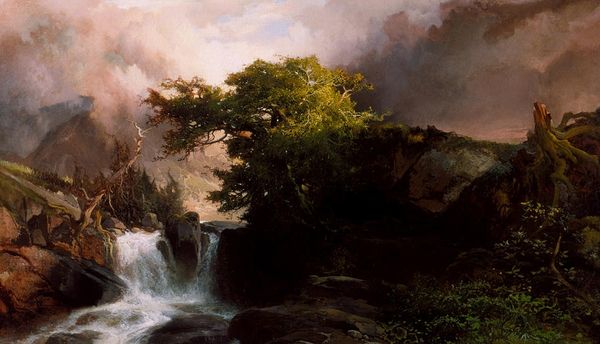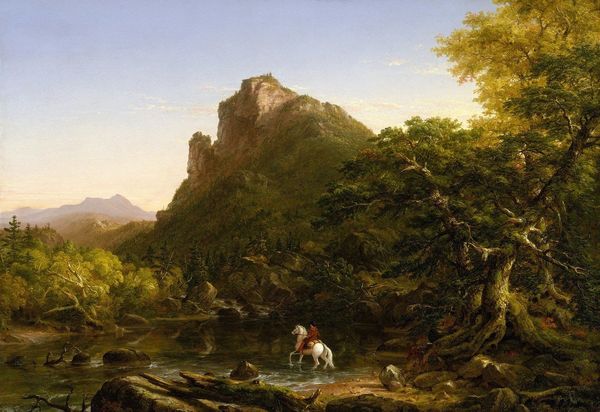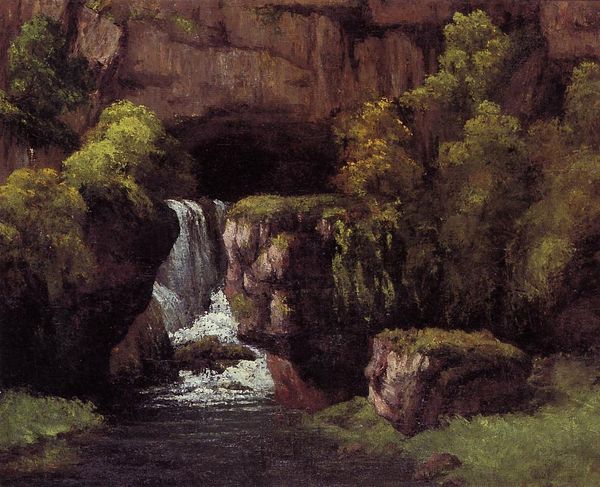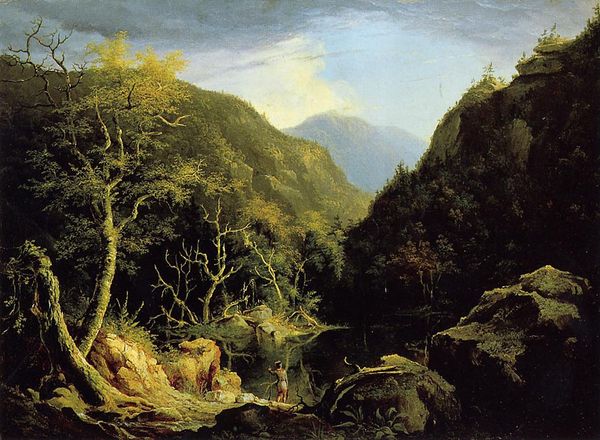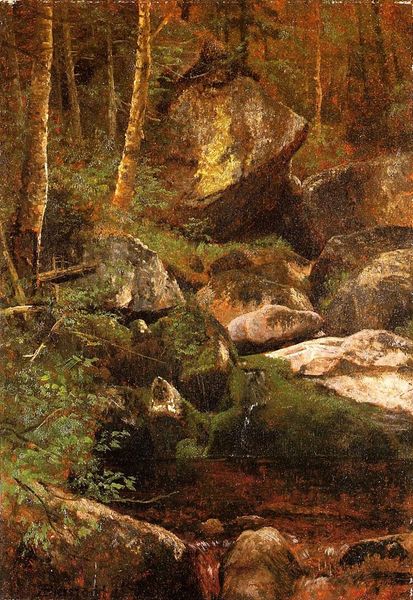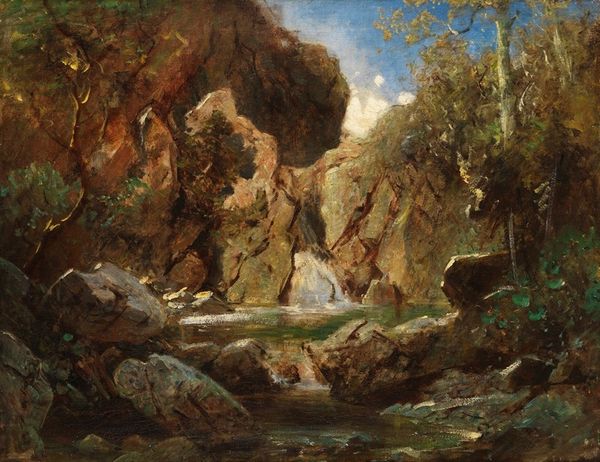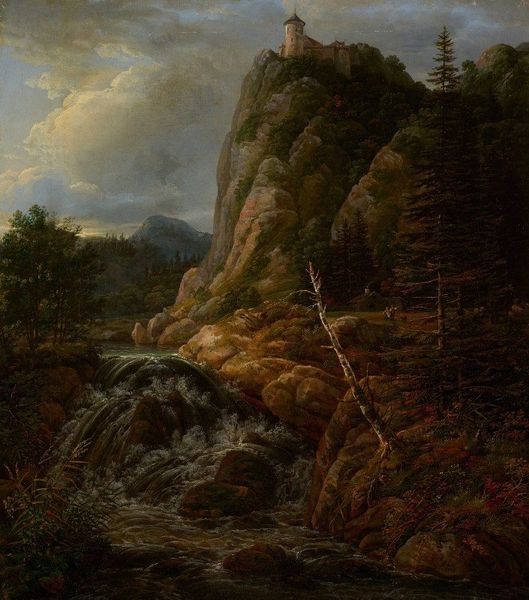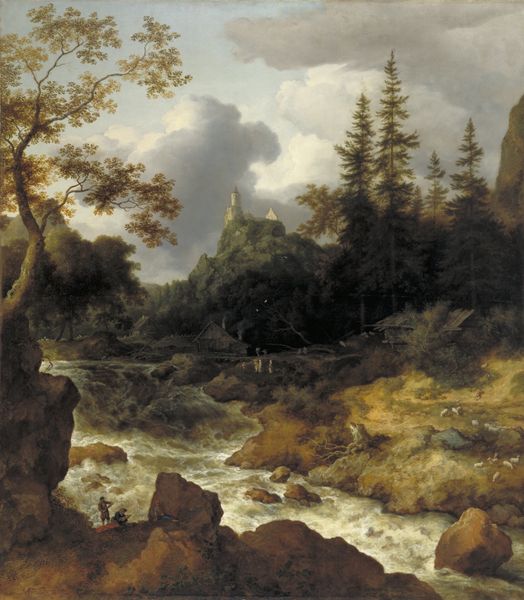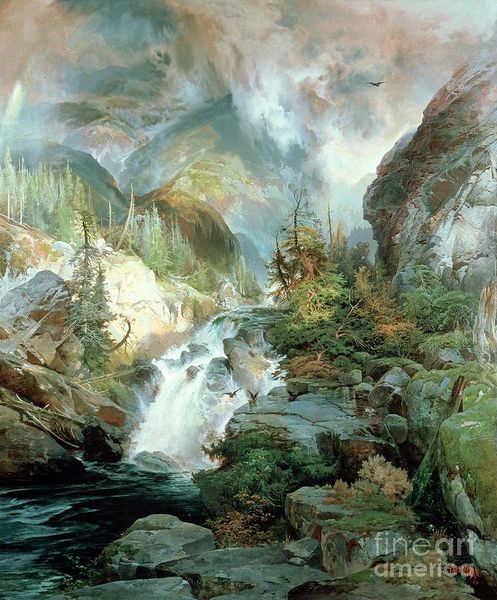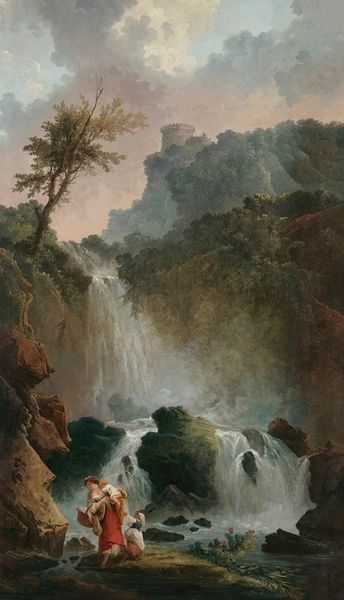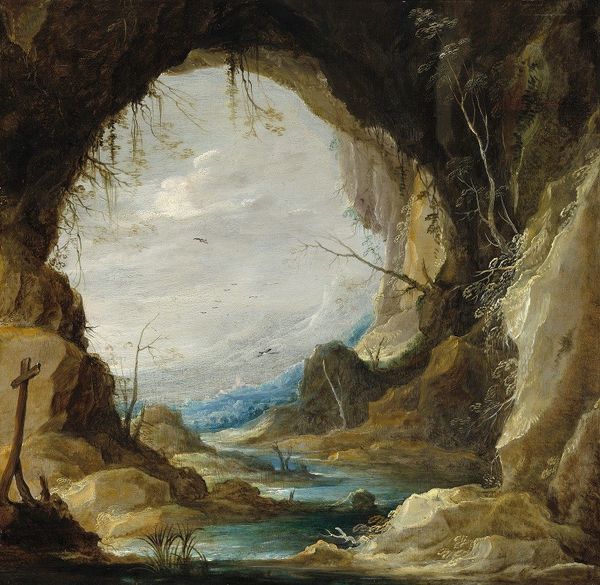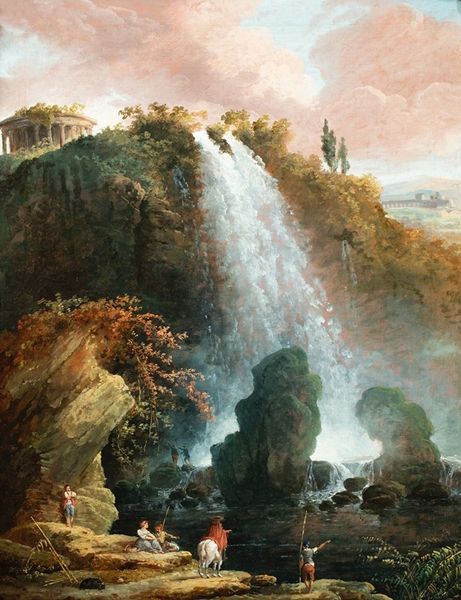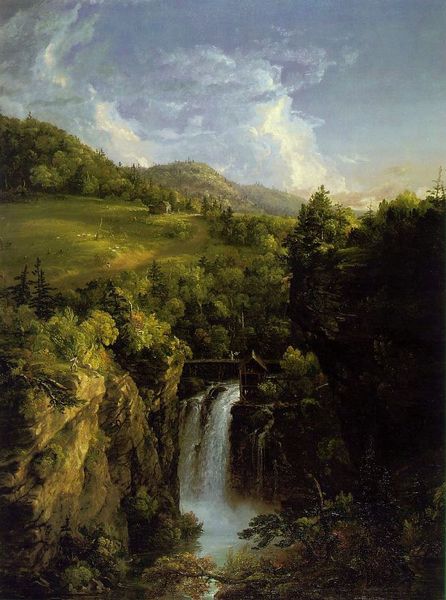
Copyright: Public domain
Curator: Ah, look, isn’t this interesting? It's Thomas Moran’s 1860 painting, "Salvator Rosa Sketching the Banditi," crafted with oil paints. It has such a vibrant scene within a landscape, and somehow it's calling my name...what are your initial thoughts? Editor: Brooding. The dark cave juxtaposed with the rushing water evokes such a sense of romanticized danger. I wonder how Moran frames the narrative of the "banditi," as bandits often function as symbols of resistance against established power structures. Curator: Exactly. The figures almost seem to blend with the dark recesses of the cave, hidden in plain sight—almost ghosts. Maybe he’s inviting us to think about art’s own act of theft—taking the world and fixing it, pinning it down on the canvas? Editor: That’s a tantalizing angle. Considering the era, post-Italian Unification, these "banditi" become interesting subjects. The image flirts with romantic notions of criminality and questions the socio-political upheaval of the time. Were they truly criminals, or dissidents? Curator: I'd also say the drama feels very theatrical, like a stage set, wouldn't you agree? Maybe that is the point though, we’re seeing not the thing itself but its recreation, through the artistic vision of Rosa himself—filtered again through Moran. Editor: Absolutely, it's performative. And that staged quality speaks to the potential myth-making involved in both Rosa's artistic endeavors and Moran’s retelling. By extension, is Moran also commenting on the myth of the "wild" landscape, and its relation to "uncivilized" peoples? Curator: Could be! The running water really steals the scene for me. Look how it cuts through those rugged rocks, it just feels...free, almost? The power of nature is unrestrained. That's a point of escape from what otherwise feels so claustrophobic within that grotto, if only in my imagination, I suppose. Editor: True, but even that natural freedom, idealized here, becomes a loaded concept when considering landscape as a site of exploitation. How does portraying this "untamed" nature reinforce or challenge colonial narratives? Curator: A landscape layered with questions! I think it's that inherent tension, that back-and-forth between wild beauty and societal pressures, that keeps me coming back. Editor: It offers us the chance to unravel the layers of meaning embedded in the imagery, and engage critically with the historical and social forces at play. A charged landscape.
Comments
No comments
Be the first to comment and join the conversation on the ultimate creative platform.
